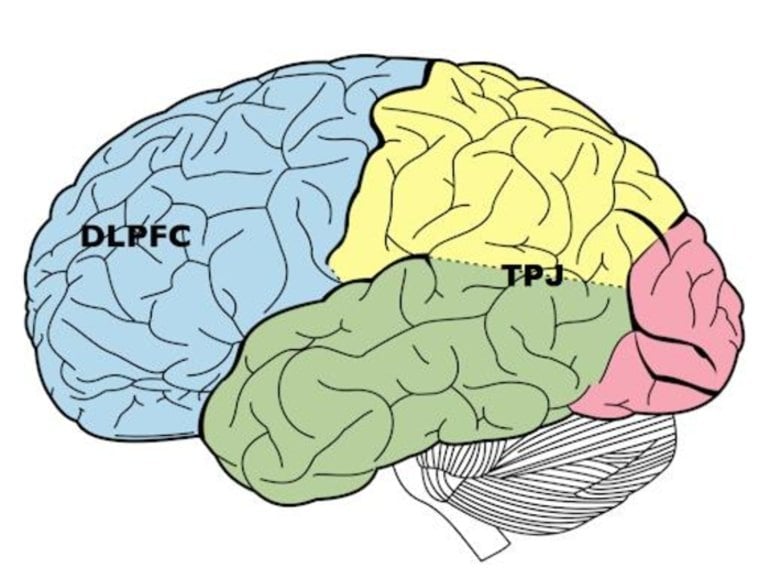Summary: The stronger the connection between the dorsolateral prefrontal cortex and temporal-parietal junction, the less likely people are to punish others for selfish deeds.
Source: HSE
The stronger the functional brain connections, the less inclined someone is to punish others for unfair behavior. This conclusion was reached by HSE researchers following a neuroimaging experiment.
Their paper ‘Wired to punish? Electroencephalographic study of the resting-state neuronal oscillations underlying third-party punishment’ was published in the journal Neuroscience.
Productive and predictive interaction with other people is possible thanks to the existence of numerous social norms. However, the fact that these norms exist does not guarantee that they will be followed: punishment for norm violators is needed. This is how various forms of social punishment act as tools to reinforce order and cooperation in communities. Punishment may be imposed by the victim of the violation (the second party) or an observer who had not suffered (a third party).
Whole networks of various brain structures are involved in third-party punishment decision-making. The key zones are the dorsolateral prefrontal cortex (DLPFC) and temporoparietal junction (TPJ). Researchers assume that the TPJ evaluates the level of guilt and deliberateness of the violation, while the DLPFC receives this signal on guilt assessment and transforms it into a specific decision on punishment.
The interaction between the TPJ and DLPFC is important for making a decision on punishment. HSE University researchers assumed that the initial connectivity between these areas in a specific human brain impacts a person’s readiness to impose punishment.
To confirm this hypothesis, the researchers conducted a neuroimaging experiment. At first, the participants’ brain activity was recorded with electroencephalography (EEG) over a span of ten minutes. During this time, the participants did not perform any tasks, and during the last five minutes, they sat with their eyes closed.
Such recording of brain activity in resting state helped with further analysis to assess the power of connection between different brain areas in each of the participants. A total of 17 people entered the final sample, each playing the role of a third party.
‘In classical neuroimaging studies, we rely on data that is recorded while the participants are completing the assignment. However, in the studies where we receive data on brain activity in resting state, we can assume, with certain limitations, how a person who has not even seen the task would behave,’ commented Oksana Zinchenko, research fellow at the Institute for Cognitive Neuroscience.
Immediately after EEG, the participants were given an assignment to observe two other people playing the ‘dictator game’. The first player, the ‘dictator’, received 40 coins in each attempt, part of which they kept for themselves, while the other was given to the other player – the receiver. The actions of both players were programmed, but the experiment participants believed they were real people.
The role of the observer (the third party) was as follows: when the dictator made a decision on money distribution, the observer could ‘punish’ them for an unfair decision. The punishment was a ‘fine’. However, in order to issue a fine, the participant had to invest their coins. The dictator received a fine that was twice as high as the invested amount. The money they had left was converted into real payment for participating in the experiment.

For example, in one round, the dictator decided to keep 35 coins and give five coins to the receiver. The experiment participant decided to invest 10 coins in punishing the dictator, and 20 coins were withheld from the dictator’s win in this round.
For all rounds with unfair decisions, the level of punishment was calculated as the number of game money the participant was willing to spend in order to punish the dictator. Following this, the level of punishment was correlated with connectivity between the temporoparietal junction and the dorsolateral prefrontal cortex.
The researchers found that the stronger the connectivity between these two areas, the lower the level of punishment, which meant less money spent punishing the dictator for unfair decisions. This connectivity also likely reflects the inclination to accumulate evidence against the dictator. Further research may confirm or refute this hypothesis.
It was also confirmed that the functional condition of TPJ in resting state impacts a person’s readiness to punish others for injustice. It is assumed that a more ‘sensitive’ TPJ means that unfair behaviour causes a stronger guilt evaluation signal, which is followed by a stricter decision on punishment.
About this behavioral neuroscience research news
Author: Ksenia Bregadze
Source: HSE
Contact: Ksenia Bregadze – HSE
Image: The image is credited to Oksana Zinchenko
Original Research: Closed access.
“Wired to Punish? Electroencephalographic Study of the Resting-state Neuronal Oscillations Underlying Third-party Punishment” by Oksana Zinchenko et al. Neuroscience
Abstract
Wired to Punish? Electroencephalographic Study of the Resting-state Neuronal Oscillations Underlying Third-party Punishment
For over a decade, neuroimaging and brain stimulation studies have investigated neural mechanisms of third-party punishment, a key instrument for social norms enforcement.
However, the neural dynamics underlying these mechanisms are still unclear. Previous electroencephalographic studies on third-party punishment have shown that inter-brain connectivity is linked to punishment behavior.
However, no clear evidence was provided regarding whether the effect of inter-brain connectivity on third-party punishment is mediated by local neuronal states. In this study, we further investigate whether resting-state neuronal activity in the alpha frequency range can predict individual differences in third-party punishment.
More specifically, we show that the global resting-state connectivity between the right dorsolateral prefrontal and right temporo-parietal regions is negatively correlated with the level of third-party punishment. Additionally, individuals with stronger local resting-state long-range temporal correlations in the right temporo-parietal cortices demonstrated a lower level of third-party punishment.
Thus, our results further support the idea that global and local neuronal dynamics can contribute to individual differences in third-party punishment.







